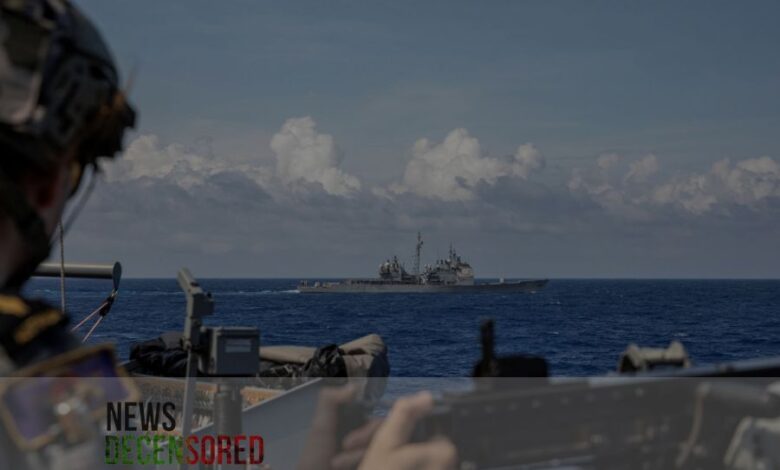Rising Tensions in the South China Sea: US Missile Deployment Sparks Concerns

The deployment of a robust US missile system to the Philippines has ignited a fresh wave of tension in the already volatile South China Sea. China has accused the United States of escalating military confrontation, while the US insists it’s a necessary step to counter China’s growing missile arsenal.
The centerpiece of the controversy is the Mid-Range Capability (MRC) missile system, also known as the Typhon system. This mobile launcher can fire defensive and offensive missiles, including the Standard Missile 6 (SM-6) with a range of 370 kilometers and the Tomahawk Land Attack Missile with up to 1,600 kilometers. This deployment marks the first time the Typhon system has been stationed in the Indo-Pacific region, coinciding with the largest-ever edition of the annual Balikatan military exercises between the US and the Philippines.
The US military frames this move as a strategic response to China’s aggressive actions in the South China Sea, which have included clashes with Philippine vessels and the construction of military outposts on disputed islands. Analysts point out that China possesses a significant advantage in land-based missiles, threatening US forces in the region. With its mobility and long-range capabilities, the Typhon system aims to level the playing field and deter potential Chinese aggression.
However, Beijing views the deployment with suspicion. China’s Foreign Ministry spokesperson, Lin Jian, accused the US of seeking unilateral military advantage and undermining regional stability. This sentiment echoes past Chinese reactions to similar deployments, such as the 2016 THAAD missile system installation in South Korea, which was met with harsh economic retaliation.
The potential consequences of this escalating tension are significant. The deployment could trigger a regional military arms race, further straining relations between the US and China, the world’s two largest economies. Additionally, any miscalculation or incident involving powerful weaponry could lead to a disastrous military confrontation.
Meanwhile, the Balikatan exercises themselves are another point of contention. Some see the inclusion of French naval participation and the planned operation within the Philippines’ exclusive economic zone as a direct challenge to China’s expansive territorial claims in the South China Sea.
Finding a peaceful resolution to this complex situation requires open communication and diplomatic efforts from all parties involved. The US and China must engage in dialogue to address each other’s security concerns and prevent further escalation. Additionally, regional players like the Philippines must navigate these competing interests to ensure security and economic well-being.
The future of the South China Sea remains uncertain. The US missile deployment has undoubtedly raised the stakes. Still, it also presents an opportunity for the US, China, and other regional actors to work towards a more peaceful and stable future for the crucial waterway.




